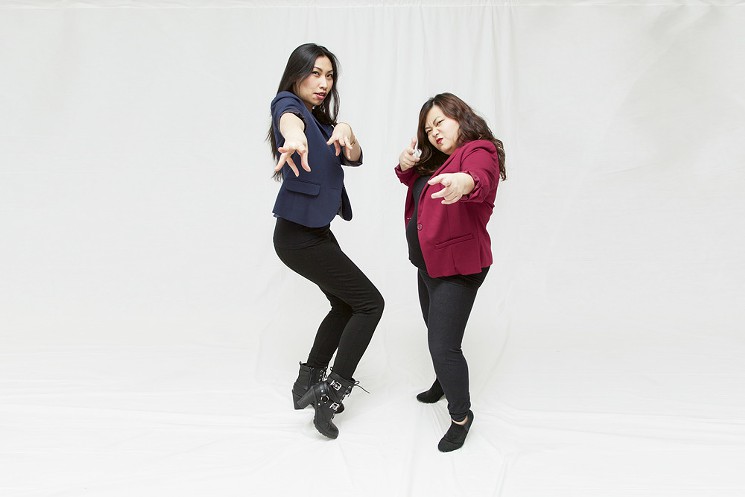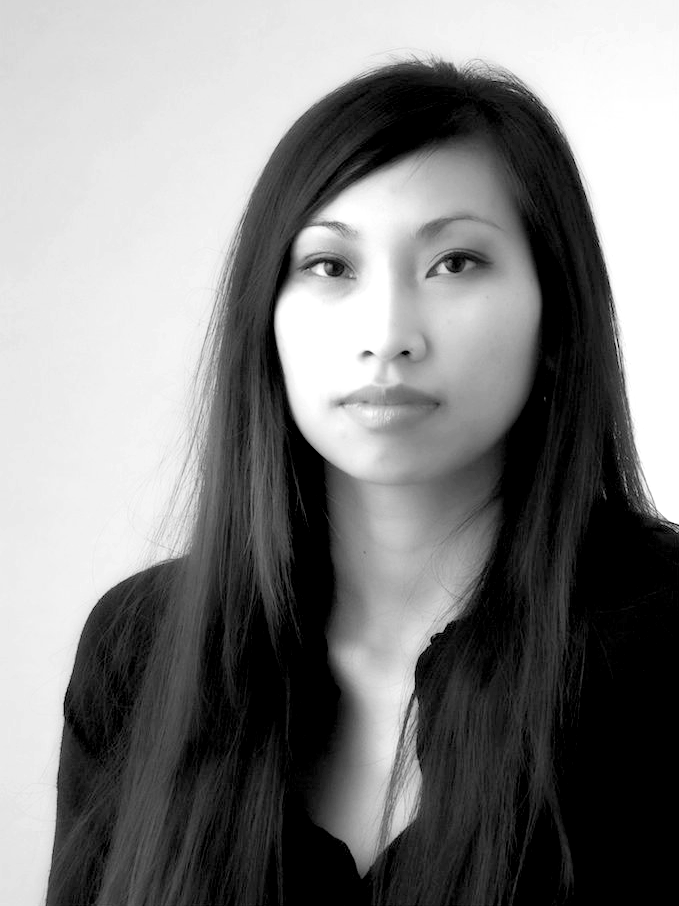Hmong-Lao/Lao-Hmong Friendship: It’s Complicated
Playwrights May Lee-Yang and Saymoukda Duangphouxay Vongsay defy deeply entrenched inter-community divides and glib cultural stereotypes deftly and with wry candor in this new play about the complexities of identity and immigrant life in America.

Sometimes what draws us to each other is much simpler than the complex histories of the identities we are asked to occupy. For years, best friends May Lee-Yang and Saymoukda Duangphouxay Vongsay have collected hilarious anecdotes and irreverent insights on life in Minnesota. Working across ethnic identities often framed in opposition to each other, and collaborating through shared experiences, both as children of immigrants and refugees and as writer-performers in the Twin Cities theater scene, the two have teamed up to turn these experiences into a new musical comedy, The Hmong-Lao/Lao-Hmong Friendship Play.
The double-titled production tells a story of connection across entrenched difference and of the complexity we navigate within our inherited identities. By teasing out personal stories and the tangled heritage of two migrant communities now woven into the fabric of American culture, Vongsay and Lee-Yang illuminate identity politics with a thoughtful exploration of its origins — and its limits.
Forty years after their joint migration as refugees into the United States, a fault line still endures between American Hmong and Lao communities. Defying this barrier, these Minnesotan artists employ the cultural similarities in language, food, and music to build a stage for analysis of the stubborn residue of resentment between two ethnicities who, as neighbors both here and in their old world, nonetheless share an experience of forced exile and resettlement in the United States.


While their close friendship and the play’s cultural production is embedded in the playwrights’ ethnic identities, Vongsay and Lee-Yang also celebrate the potential for a blurring of ancient lines and the flowering of new identities. Operating as both a personal narrative and political satire, the play imagines possibilities across established polarity that might permit both cumulative and collaborative cultural production. The play shows us how refugees of color operate within dominant structures as they navigate their paths in a new home.
The play is situated in a long tradition of performance in which newcomers to the United States adopt elements of existing pop cultural forms while enriching them with artifacts from their own artistic customs. Speaking to contemporary American culture and political discourse, the playwrights work through vignettes on migrant life to contribute to ongoing debates about art, accessibility, and identity.
The play is itself being promoted through that quintessential 21st-century cultural form, the pop music video. Both the video’s title, Refugee Slang, and structure pay tribute to hip hop. Through this and other invocations of American pop culture, the playwrights deftly show how pop works as a gateway into American culture for immigrants, giving them the permissive vocabulary with which to make sense of their new home, stand up for themselves, and fight for their right to be heard. Lee-Yang and Vongsay also draw on a long tradition of identity comedy, in which hyphenated Americans use humor to probe the stereotypes with which they have been defined by the dominant culture, and to point out what it is like to live within the assumptions made along identitarian lines. In this way, Refugee Slang supplies what might be the central revelation of the story for Hmong and Lao audiences: that the terms by which Lao and Hmong reference each other are also slurs, legacies of an antagonistic past that the playwrights’ close friendship and successful collaboration fight against. Through making explicit the ways these references are actually insults, the two friends perform a kind of exorcism of the past: revealing the content of the slurs and encouraging people to stop using them.
By extending their investigations into identity away from a focus on dominant culture’s perceptions of outsiders, the playwrights show the ways in which the Hmong and Lao communities’ uncharitable characterizations of each other have survived their shared migration. Coming to America, it turns out, hasn’t brought about an erasure of these differences, but rather allowed their entrenchment.
Yet the play also demonstrates commonalities and innovations wrought by migrant communities like theirs. For instance, the “refugee hacks” that punctuate the humor in the play also make plain the tactics people of color employ to make a life for themselves in the US. These depictions — showing families foraging for fruits and wild vegetables, community events like weddings and funerals as opportunities to eat, and the importance of food stamps — supply comic relief even as they demonstrate the stark nature of poverty in immigrant communities. The humor here addresses serious and potentially shameful issues; the playwrights are putting it all out there, in the grand tradition of standup comedy. In the same vein, the mockery of the beauty pageants which are a common feature of life in immigrant communities, also wrestles with how these communities interact with each other and with the dominant culture.
Throughout the play anxieties about heritage and authenticity, language, appropriation, the degree and necessity of integration, sit alongside discussions of America’s obligation to create the conditions and opportunities for immigrants to settle and thrive here. All such questions are expressive of a broader struggle to figure out who we, as Americans, truly are. In their exploration of spaces permissive of dissent and innovation, Vongsay and Lee-Yang impress on us their American-ness, as well as their Hmong-ness and Lao-ness. In so doing, as artists. the two women map out broader possibilities of becoming entailed in figuring out what part of our treasured cultural heritage is left behind, what is borrowed, and what our coming together in new ways allows us to create.
Lee-Yang and Vongsay’s work poses contrasting questions to different audiences. For immigrants, they raise the all-too familiar questions of finding a place and home in a place that at once accepts and rejects us, and for Americans in the dominant culture, the work offers a momentary gaze into the complexities of that navigation.
Related performance information:
The Hmong-Lao Friendship Play | Lao-Hmong Friendship Play is on stage Thursday, October 29 through Saturday October 31, 2015 at Penumbra Theater in St. Paul. Keep track of upcoming shows: http://www.hmonglaofriendshipplay.com/.
Nekessa is a writer and media practitioner. She also produces and hosts a weekly radio show on immigrants and immigration on AM 950.